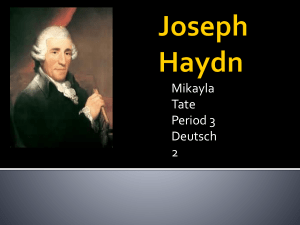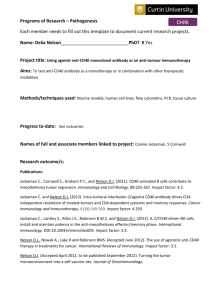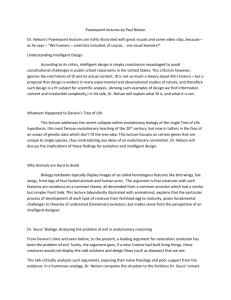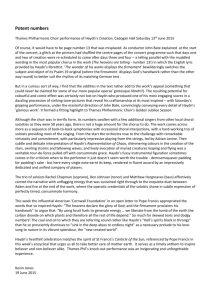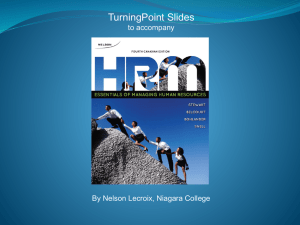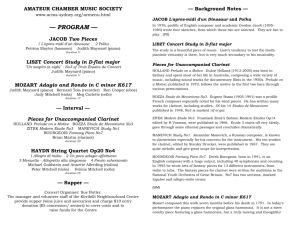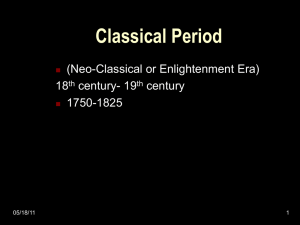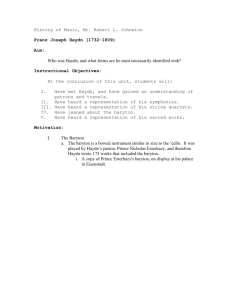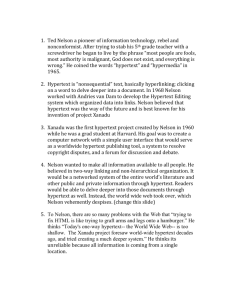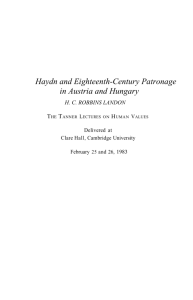Late eighteenth-century Europe was marked by political turmoil as
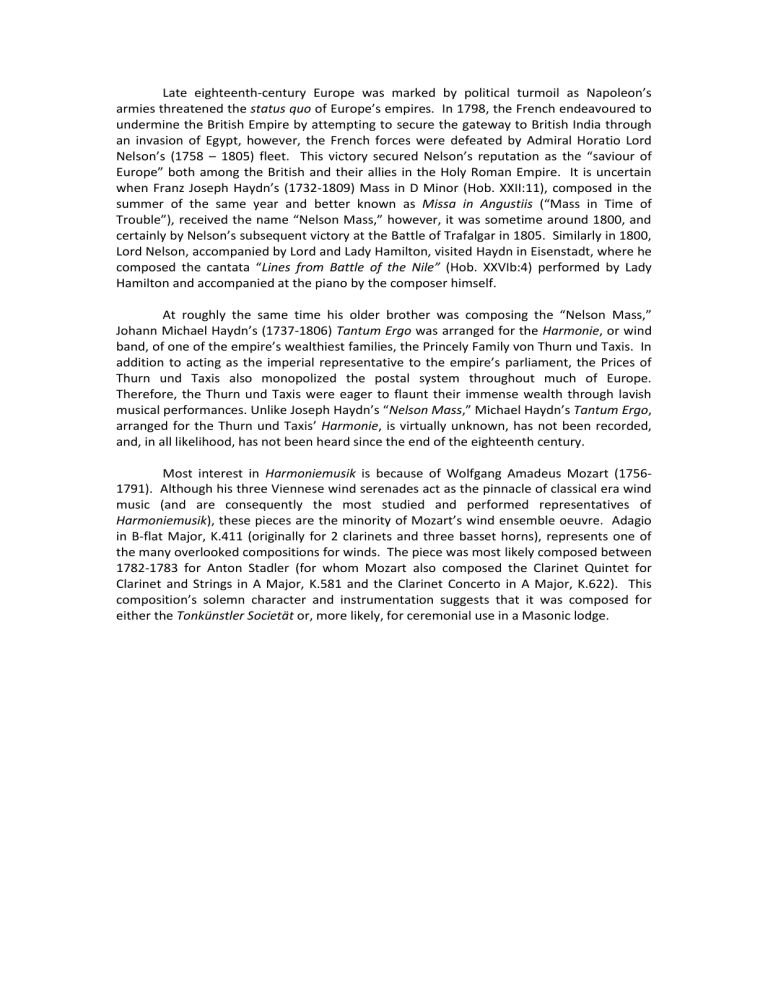
Late eighteenth-century Europe was marked by political turmoil as Napoleon’s armies threatened the status quo of Europe’s empires. In 1798, the French endeavoured to undermine the British Empire by attempting to secure the gateway to British India through an invasion of Egypt, however, the French forces were defeated by Admiral Horatio Lord
Nelson’s (1758 – 1805) fleet. This victory secured Nelson’s reputation as the “saviour of
Europe” both among the British and their allies in the Holy Roman Empire. It is uncertain when Franz Joseph Haydn’s (1732-1809) Mass in D Minor (Hob. XXII:11), composed in the summer of the same year and better known as Missa in Angustiis (“Mass in Time of
Trouble”), received the name “Nelson Mass,” however, it was sometime around 1800, and certainly by Nelson’s subsequent victory at the Battle of Trafalgar in 1805. Similarly in 1800,
Lord Nelson, accompanied by Lord and Lady Hamilton, visited Haydn in Eisenstadt, where he composed the cantata “Lines from Battle of the Nile” (Hob. XXVIb:4) performed by Lady
Hamilton and accompanied at the piano by the composer himself.
At roughly the same time his older brother was composing the “Nelson Mass,”
Johann Michael Haydn’s (1737-1806) Tantum Ergo was arranged for the Harmonie, or wind band, of one of the empire’s wealthiest families, the Princely Family von Thurn und Taxis. In addition to acting as the imperial representative to the empire’s parliament, the Prices of
Thurn und Taxis also monopolized the postal system throughout much of Europe.
Therefore, the Thurn und Taxis were eager to flaunt their immense wealth through lavish musical performances. Unlike Joseph Haydn’s “Nelson Mass,” Michael Haydn’s Tantum Ergo, arranged for the Thurn und Taxis’ Harmonie, is virtually unknown, has not been recorded, and, in all likelihood, has not been heard since the end of the eighteenth century.
Most interest in Harmoniemusik is because of Wolfgang Amadeus Mozart (1756-
1791). Although his three Viennese wind serenades act as the pinnacle of classical era wind music (and are consequently the most studied and performed representatives of
Harmoniemusik), these pieces are the minority of Mozart’s wind ensemble oeuvre. Adagio in B-flat Major, K.411 (originally for 2 clarinets and three basset horns), represents one of the many overlooked compositions for winds. The piece was most likely composed between
1782-1783 for Anton Stadler (for whom Mozart also composed the Clarinet Quintet for
Clarinet and Strings in A Major, K.581 and the Clarinet Concerto in A Major, K.622). This composition’s solemn character and instrumentation suggests that it was composed for either the Tonkünstler Societät or, more likely, for ceremonial use in a Masonic lodge.

